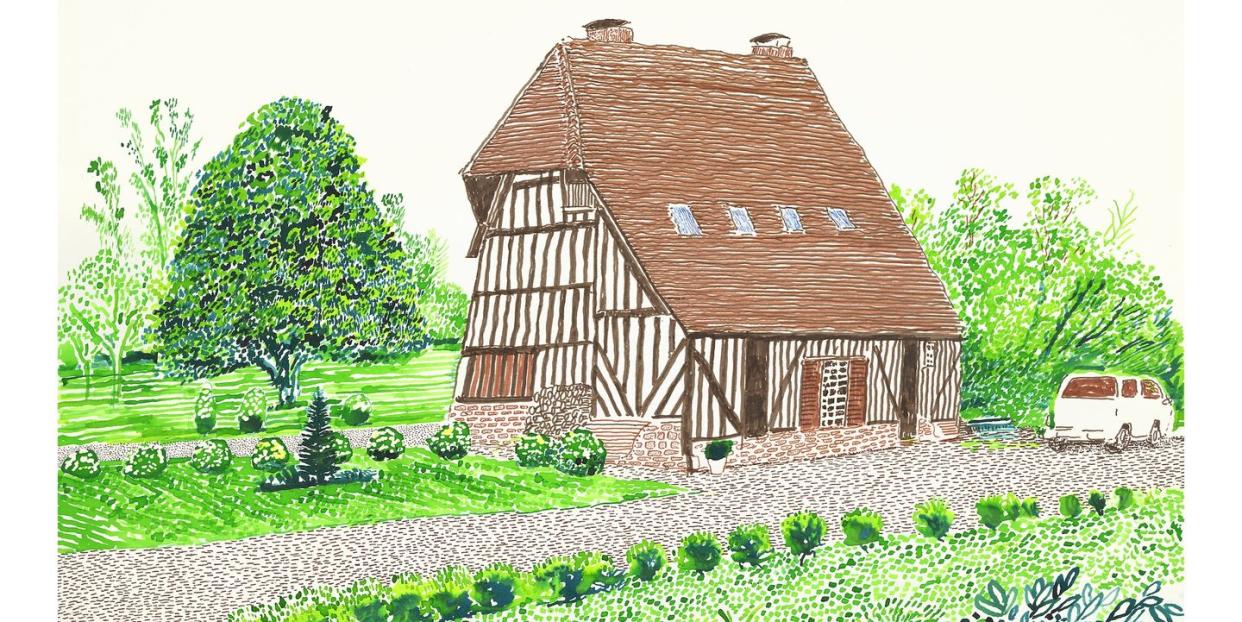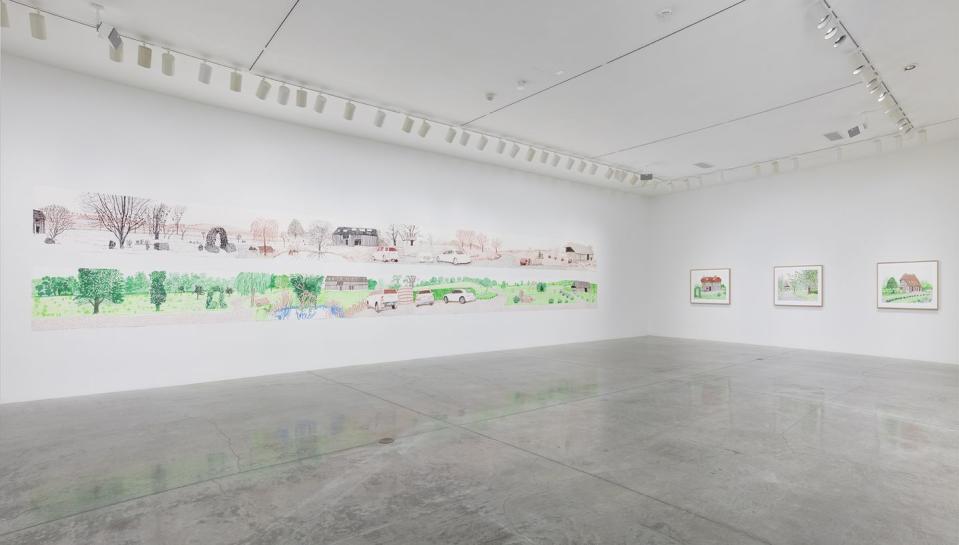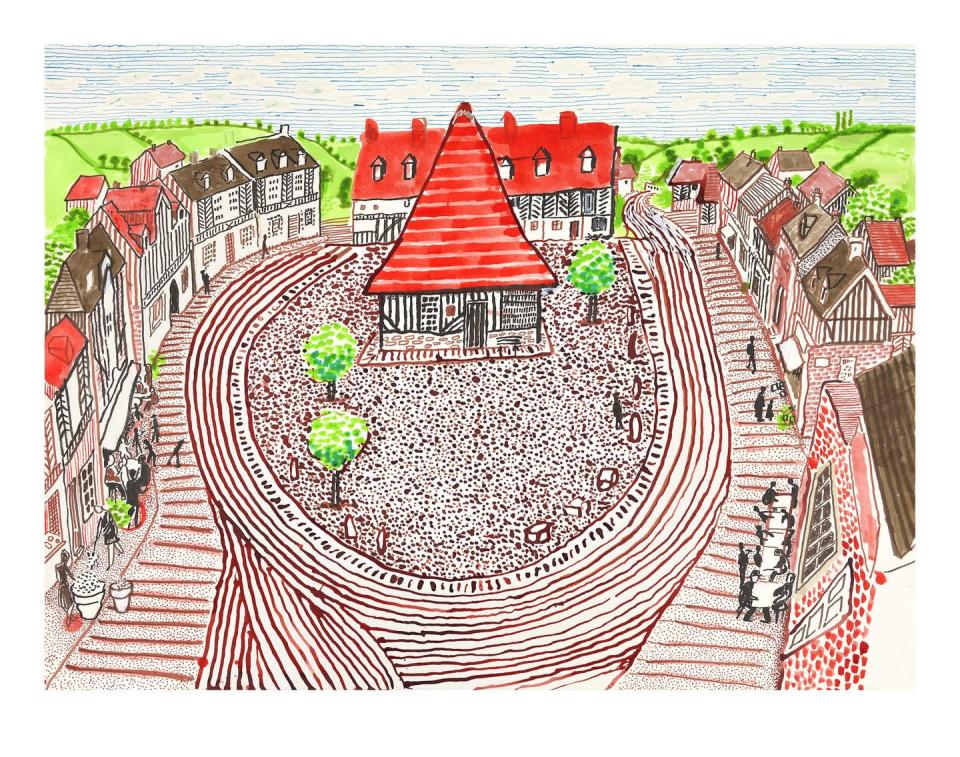Bored at Home? David Hockney Has a Lesson for You

- Oops!Something went wrong.Please try again later.
In a pandemic world where travel of any kind is rare, those of us who are able to stay home see little more than the routine sights we encounter on foot, be it a favorite tree or a pesky ceiling crack. It’s easy to grow bored with the lack of variety and to yearn for fresh views.
If you’ve fallen into such a rut, David Hockney has a lesson for you.
The octogenarian artist decamped to Normandy, France, in 2019 and weathered much of the pandemic there, spending his days documenting his environs—both bucolic and mundane—in jubilant drawings and digital paintings.
Hockney’s output is the subject of “David Hockney: My Normandy,” a new show on view at Los Angeles gallery L.A. Louver through May 1. The exhibition features 11 inkjet prints from original drawings, three iPad “paintings,” and two 40-foot-long panoramic prints. They document the humdrum scenes of everyday life, from half-thatched cottages to cars parked in a village to spilled ink on a messy work surface. As a collection, these works demonstrate how much beauty can be found in our chosen environment—if we are willing to devote the time to really look.

Though the scenes feel intimate and familiar, Hockney’s Normandy residency marked his first time to the region, notes Peter Goulds, the founding director of L.A. Louver who has worked with the artist since 1979. Between exhibitions, the artist decided to check the area out, in part to visit friends and in part to see where his studio manager, Jean-Pierre Gonçlaves, calls home.
While there, Hockney fell head over heels for the countryside and a 17th-century half-timbered thatched cottage located on a 12-acre plot, complete with two barns. The house itself was in good shape, but the pair of agrarian structures needed work. Hockney moved into the main house, and Gonçlaves worked to convert one of the barns into a studio.

For Hockney, Normandy bears a striking resemblance to East Yorkshire in northern England where the artist grew up. As a teenager, he would work in the fields and sleep in a barn during summer holidays. In the early aughts, he returned to the nearby town of Bridlington regularly to visit his sister and mother, and returned again in 2005 for a series of en plein air oil paintings, documenting the rhythms of the season. “Pretty soon, he realized what a transformative experience it is to spend a year in one place,” Goulds explains.
Normandy is Hockney’s new muse. The verdant prints on view of the home (the artist usually splits his time between Los Angeles and the U.K.) feature delicate and precise marks, created on an iPad screen or by hand. The two monumental frieze prints, depicting the surrounding village in summer and winter, were inspired by Normandy’s famed Bayeux Tapestry, a 230-foot-long, 11th-century embroidered cloth depicting the Norman conquest of England. And then there are the iPad “paintings,” including a still life of a sheaf of wheat in a simple jug, and ash left over in a cold hearth.
Solitude, notes Goulds, is what “most artists strive to try and claim, and have the hardest time getting on with.” Not so for Hockney, who Goulds predicts will remain enraptured by his newfound idyll for some time to come. “It may be that that’s where he spends the rest of his life,” he speculates. “He’s extremely happy there.”
You Might Also Like

